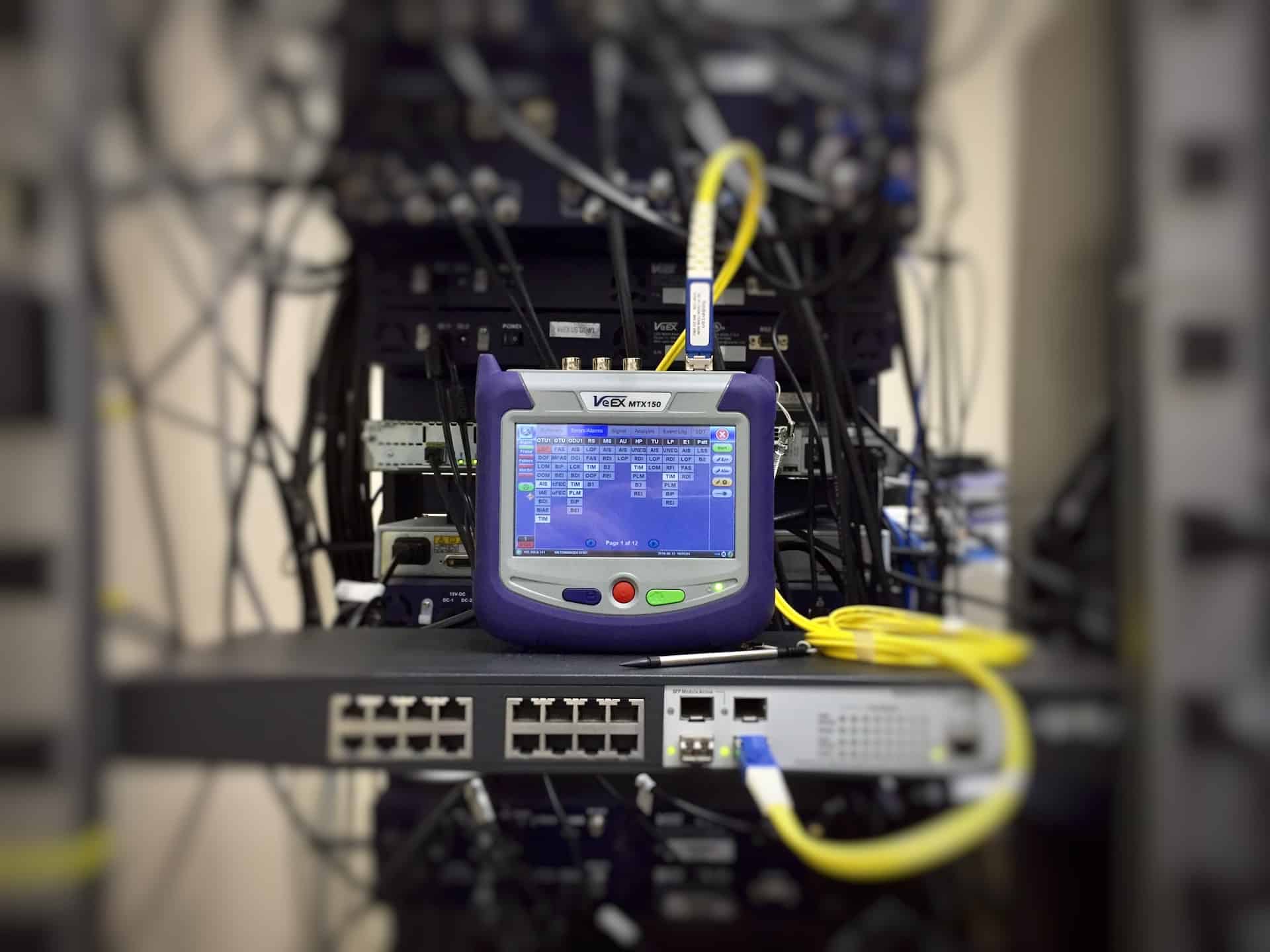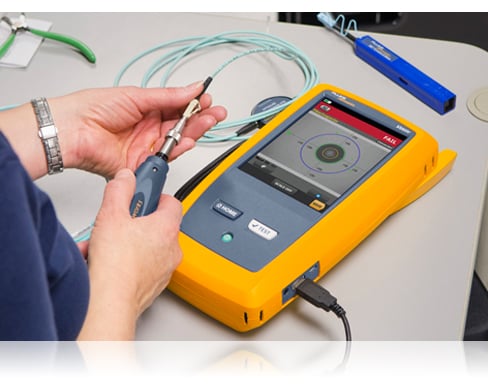Fibre testing equipment delivers detailed measurements for various applications.
Fibre testing equipment delivers detailed measurements for various applications.
Blog Article
Discover the Significance of Optical Fiber Screening in Modern Telecommunications
In the world of modern-day telecommunications, the value of optical fiber testing can not be overstated, as it offers as the foundation for guaranteeing network dependability and efficiency. By applying regular screening procedures, operators can preemptively determine possible concerns such as signal destruction, hence safeguarding against interruptions that could prove costly. Advanced techniques like Optical Time-Domain Reflectometry play an essential function in this process, yet numerous may ignore the more comprehensive effects of these practices. What are the details benefits that normal testing deals, and how might it shape the future landscape of telecommunications?

Comprehending Optical Fiber Testing
Optical fibre testing is a vital process in telecommunications that makes certain the stability and efficiency of fibre optic networks. This screening includes an array of procedures developed to review the physical and practical attributes of optical fibres - robotic vision. Secret parameters examined include optical power loss, bandwidth capability, and fault place, which are necessary for keeping high-grade interaction web links
The screening process typically entails making use of specific equipment such as Optical Time-Domain Reflectometers (OTDR) and Optical Power Meters. OTDRs are employed to determine and define mistakes, entwines, and adapters within the fiber, while power meters determine the transmitted light signal strength to identify efficiency.
Moreover, screening is performed at numerous stages, including throughout installment, upkeep, and troubleshooting, to ensure that the network fulfills sector criteria and functional requirements. Compliance with criteria established by companies like the International Telecommunication Union (ITU) and the Telecoms Industry Organization (TIA) is extremely important.
Benefits of Regular Evaluating
Regular testing of optical fibres yields countless benefits that dramatically boost network integrity and efficiency. One of the main advantages is the very early discovery of potential problems, such as breaks or degradation in the fiber, which can bring about expensive downtime if left unaddressed (ofda). By determining these troubles proactively, telecommunications suppliers can decrease solution disturbances and guarantee regular connection for their clients
In addition, normal testing aids to preserve the integrity of signal high quality. As optical fibres age, their efficiency can be affected by elements such as environmental conditions and physical tension. Regular assessments permit the tracking of signal loss and overall transmission effectiveness, guaranteeing that the network runs at optimum levels.
Another considerable advantage is compliance with market requirements. Normal screening sustains adherence to regulative needs, thus reducing legal and monetary dangers connected with non-compliance. Furthermore, it boosts the general life-span of the fibre infrastructure by promoting timely repair and maintenance.

Typical Testing Techniques
Evaluating optical fibres uses numerous techniques to guarantee the integrity and efficiency of telecommunications networks. Among the most usual methods is Optical Time Domain Name Reflectometry (OTDR), which examines the whole length of the fibre by sending out a pulse of light and gauging the reflections caused by blemishes or breaks. This approach supplies thorough information regarding the area and intensity of faults.
Another widespread technique is making use of Optical Power Meters, which determine the quantity of navigate here light transferred through the fibre. This strategy aids determine the loss of signal strength, why not find out more ensuring that it fulfills sector criteria. Additionally, Aesthetic Mistake Locators (VFL) are used to recognize breaks or extreme bends in the fibre by predicting a noticeable laser light into the cable television.
Insertion loss testing is additionally important, as it quantifies the loss of signal power arising from connections and entwines within the network. The use of Polarization Mode Dispersion (PMD) testing evaluates the impact of fibre features on signal integrity.
Each of these methods plays an essential role in keeping the efficiency and dependability of optical fiber networks, inevitably adding to smooth telecoms operations.
Effect On Network Efficiency
The stability and performance of optical fiber networks directly influence general network performance. In contemporary telecommunications, the effectiveness of data transmission relies heavily on the quality of the optical fibres used. Any kind of deterioration in the fiber's problem-- whether due to physical damages, contamination, or excessive bending-- can cause enhanced depletion and signal loss, substantially affecting data honesty and speed.
Routine optical fiber screening is vital to recognize and correct potential concerns before they manifest as network failures or slowdowns. Strategies such as Optical Time Domain Reflectometry (OTDR) and insertion loss screening make it possible for service technicians to determine the performance of fibre web links accurately. These examinations not just evaluate the physical problem of the fibers yet also make sure compliance with sector requirements, consequently protecting the network's reliability.
Additionally, a well-maintained optical fiber network adds to reduced functional expenses and enhanced client satisfaction, as end-users experience less interruptions and greater information prices. Eventually, the focus on strenuous optical fiber have a peek at these guys screening techniques serves as a cornerstone for sustaining durable telecommunications framework, guaranteeing that company can satisfy the growing demands for data transfer and connectivity in today's electronic age.
Future Trends in Testing
As we look in advance, improvements in technology are poised to reshape optical fibre testing in telecoms. The rise of automation and expert system (AI) is anticipated to enhance the effectiveness and accuracy of testing processes. Automated testing systems can conduct comprehensive assessments with marginal human treatment, dramatically minimizing the potential for mistakes and speeding up time-to-deployment.
Additionally, the assimilation of artificial intelligence formulas will allow anticipating upkeep, enabling network carriers to visualize possible issues prior to they rise into failings. This aggressive method not just improves network integrity however also maximizes functional prices.
One more emerging trend is the advancement of mobile testing devices that offer real-time evaluation - optical fibre diameter analyser. These devices will certainly equip service technicians to carry out on-site diagnostics rapidly, promoting quicker resolutions and improving service high quality
The expansion of 5G networks better necessitates the evolution of screening methods. As bandwidth demands boost, typical testing methods may no more are sufficient. Innovative remedies such as optical time-domain reflectometry (OTDR) and advanced spooky analysis will become crucial in guaranteeing the stability and performance of high-speed connections.

Verdict
In conclusion, optical fiber testing is crucial for guaranteeing the integrity and reliability of modern telecommunications networks. Routine testing methods not just assist identify possible issues such as signal loss and faults yet also add to enhanced network performance and client satisfaction. As the demand for seamless connectivity proceeds to expand, the adoption of sophisticated testing methods will certainly play an essential duty in preserving premium network standards and supporting the evolving landscape of telecoms.
Report this page